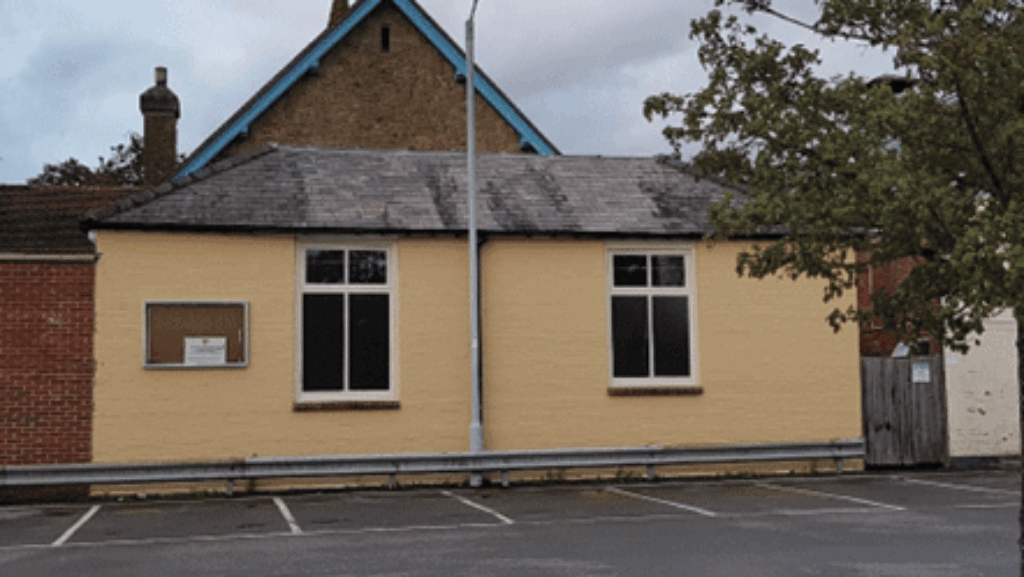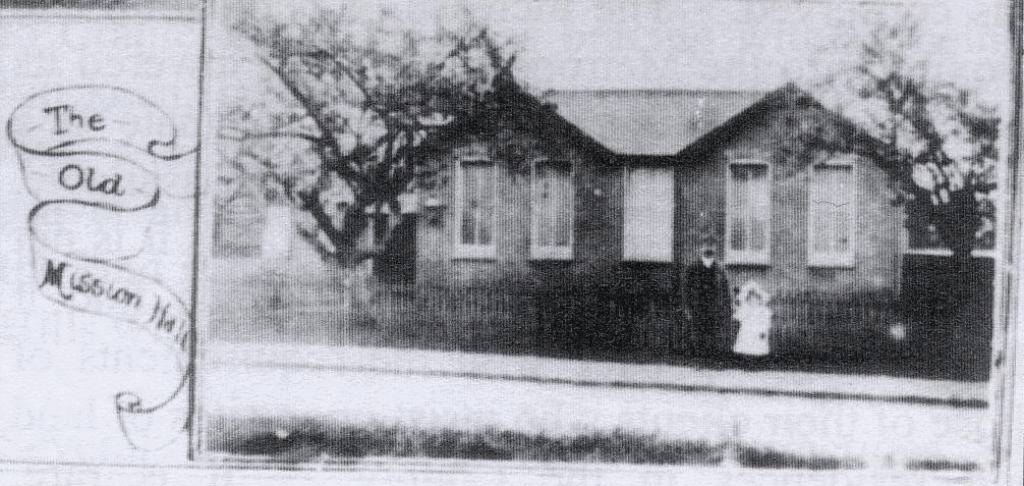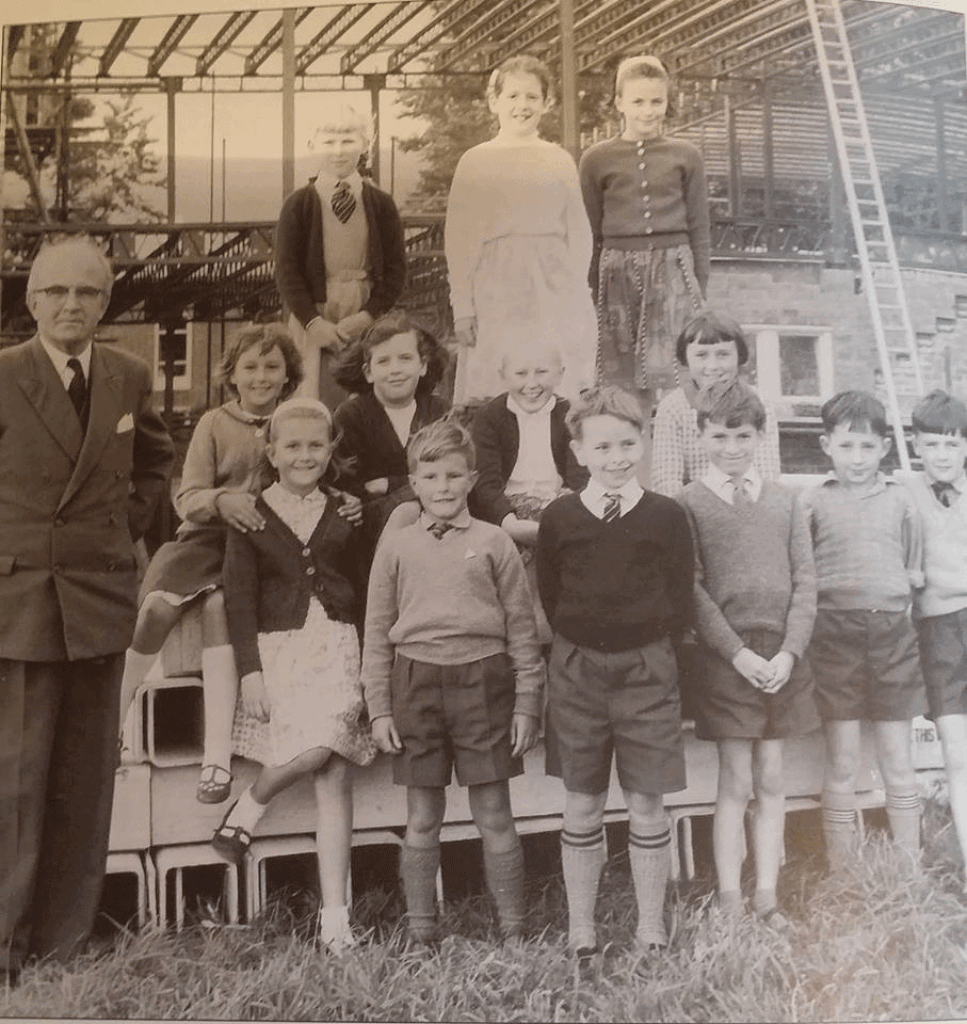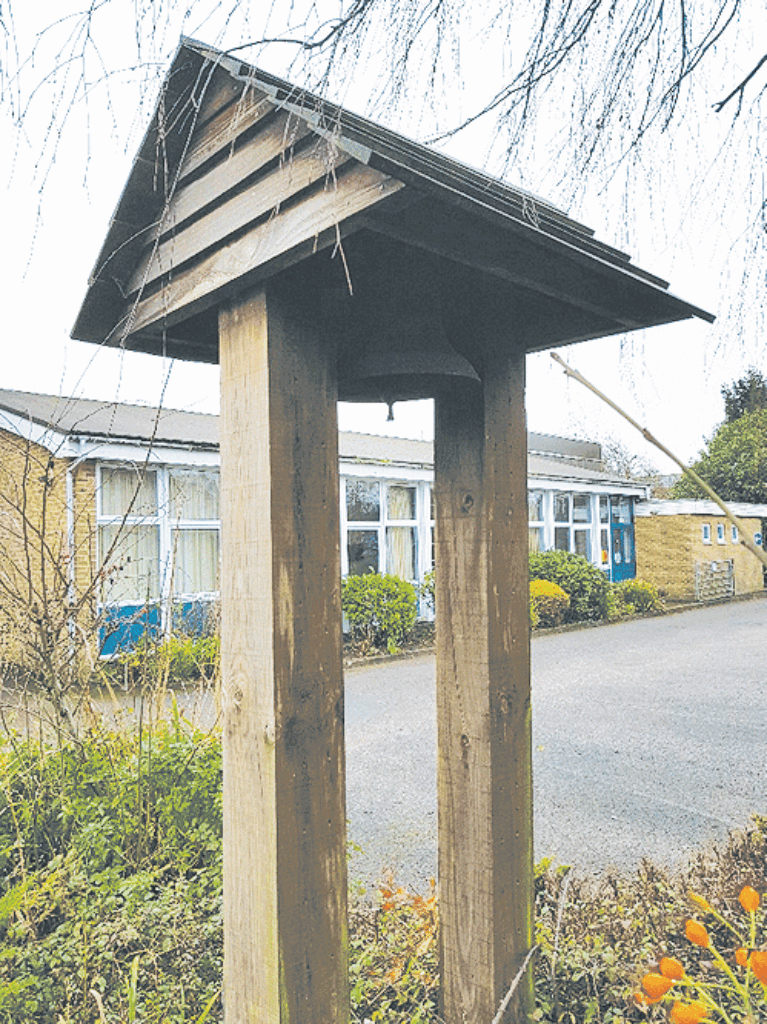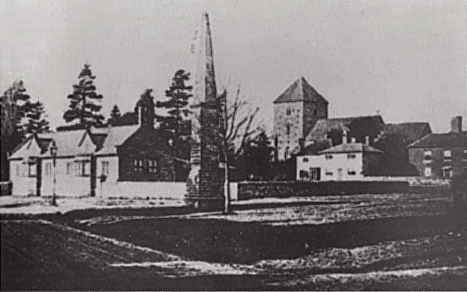
By Joy Horn // Main Picture: An early picture of the National School, 1850. There was a single schoolroom, divided into two classes. The headmaster’s house was attached at the back. (The buildings in from of the church are the Malthouses, demolished about ten years later.)
This walk explores some of the past and present schools of central Cranleigh. It starts at the Obelisk.
By the Obelisk is the old village school (now the Arts Centre), originally called the National School, built of stone from the Surrey Hills in 1847, and opened the next year. At that time, according to the rector, ‘very few Cranleigh children could read or write’, and the Parish Register of Marriages has many young people signing their names with an ‘x’ instead of a signature. An organisation known as the National Society for Promoting the Education of the Poor in the Principles of the Established Church helped financially in the founding of the school, hence the original name. The rector also raised money by sending an appeal to all the gentry living around. Before this time, there were five or six unregulated private schools of varying quality, which charged fees. Some did little more than child-mind.
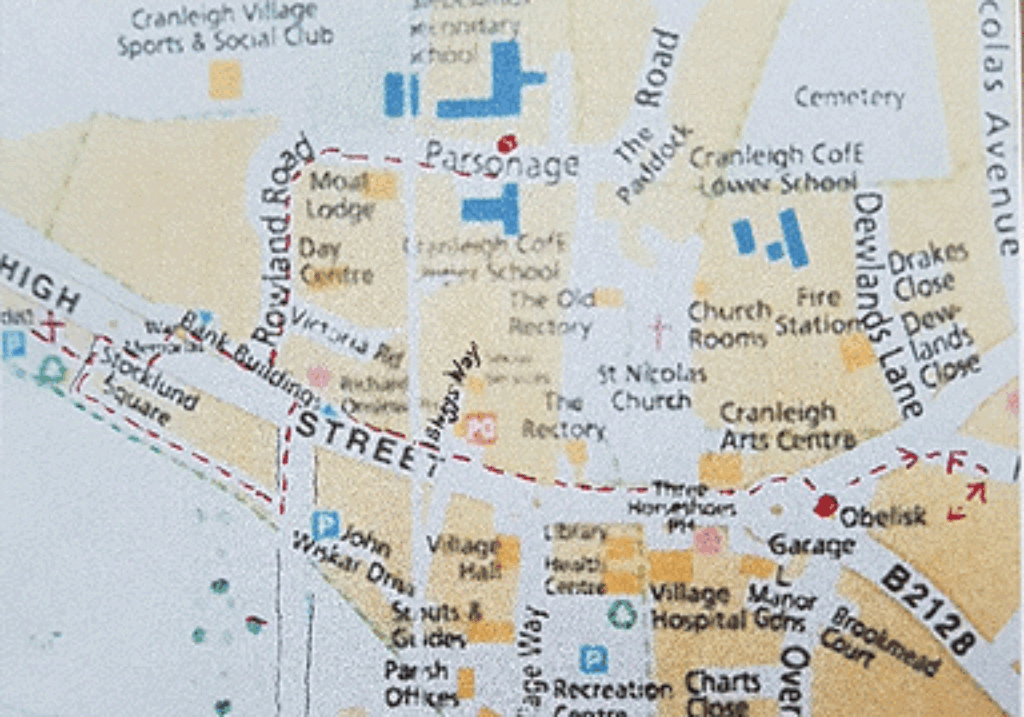
The State gradually took on more financial responsibility for children’s education. The amount paid depended on schoolchildren’s performance in Reading, Writing and Arithmetic, as tested by government inspectors, as well as a satisfactory level of attendance. In 1880 school attendance was made compulsory for children aged 5-12, with parents paying a small amount. From 1891, basic education became free.
Walk along Ewhurst Road, then bear right into Mead Road and take the first turning right. The Old Schoolhouse at no. 6 was formerly Mead Road Preparatory School. This was a small school for girls and boys, run by Mrs Jacques, which was active from the 1930s to the 1960s.
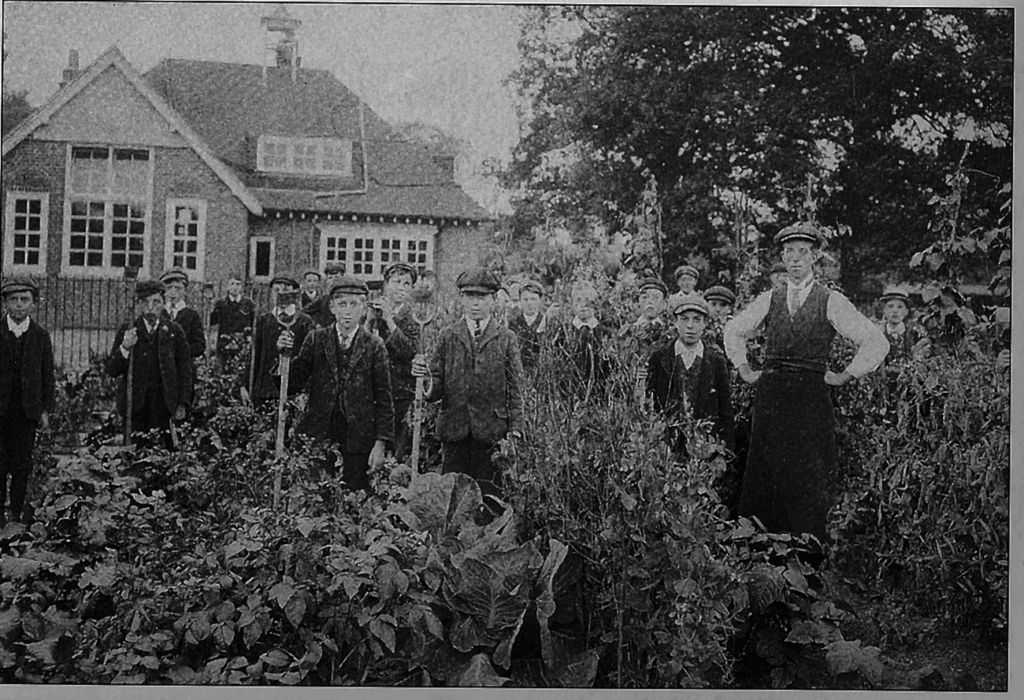
Return to the Obelisk and walk along the High Street to the Post Office. This was the site of the former ‘Greyhound’ pub. When that closed in the late 1930s, the site was used, after the 1944 Education Act had raised the school-leaving age to 15, to accommodate children aged 11-14, while a secondary school was planned and built. Their temporary home was ‘the HORSA huts’- an acronym for ‘Hutting Operation for the Raising of the School-leaving Age’. John Wiskar was appointed headmaster of this section of the school in 1956.
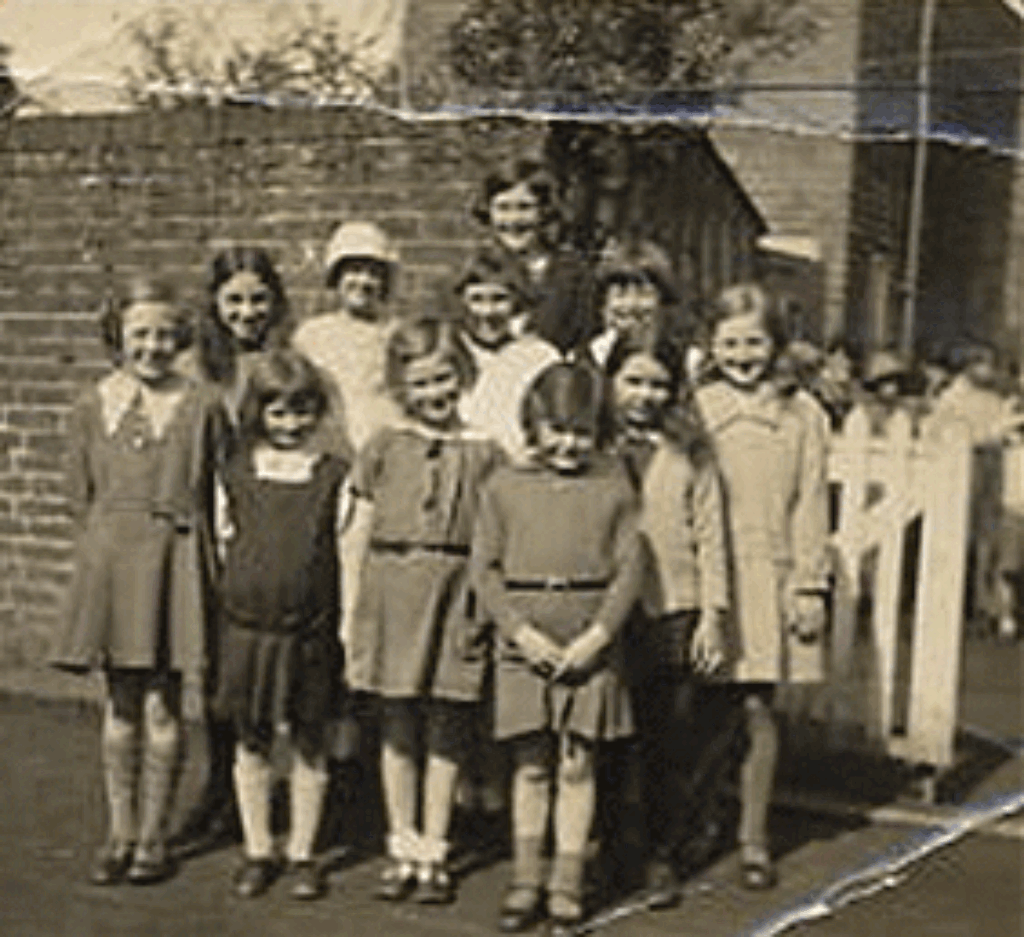
Cross Bloggs Way, named after Claude Blogg, headmaster of the National School, 1942-67, who steered the village school through the turbulent period of the War and the reorganisation.
Glance at Cromwell Cottage (formerly David Mann & Sons coffee shop) as you pass. In the very first Census (1841) there was a private boarding school here run by Thomas Child, with fifteen boys aged 11-14.
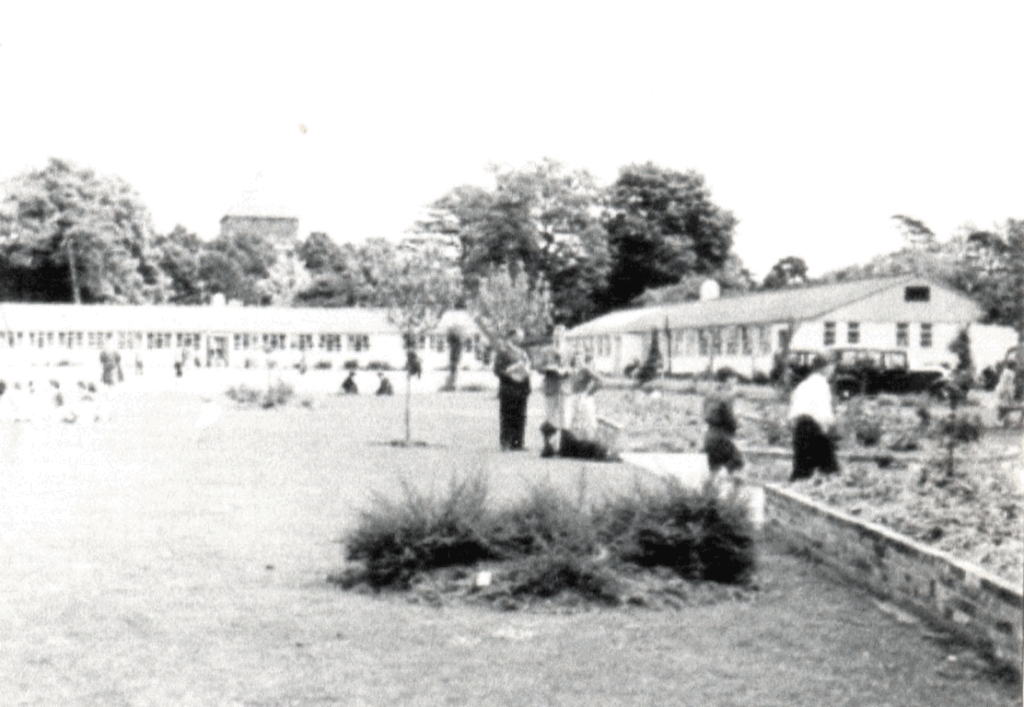
Cross to the south of High Street and turn down Knowle Lane. There was a girls’ seminary at the house called Burleigh on the right. It was run by Miss Annie Street, her mother and two sisters, and lasted for several decades.
Continue down Knowle Lane and turn right into a car park. On the right you can see Burleigh school building, now labelled ‘Burleigh Studio’. After the school had closed, this was used by two notable local photographers, Bernard Grover and Jack Harley.
Make your way behind Sainsbury’s and into the large Sainsbury’s car park. On the right, behind the Methodist church with its spire, is a small building which in the middle of the 19th century was a school run by the Baptist church, who were not enamoured of the Anglican bias of the National School. Eventually, it became too expensive to run. The children transferred to the National School, which allowed them to opt out of being taught the catechism.
Make your way out of the car park into Stocklund Square. Cross the High Street and turn left into Rowland Road, which becomes Parsonage Road. Cranleigh C of E Junior School is on the right.
This was opened in 1966 as St Nicolas Middle School, replacing the village school by the Obelisk, which had served for more than 100 years. Claude Blogg, having successfully overseen the transfer, took his retirement. Margaret Thatcher, then Minister of Education, was present at the opening. The 1848 school bell which had hung above the old school was brought here and ceremonially rung by the head boy. It was installed, with its own wooden tower, in the school’s front garden.

Across the road is Glebelands Secondary School, with its extensive playing fields, opened in July 1959. Headmaster John Wiskar moved here with the pupils from the HORSA huts. There was general delight at the range of classrooms, laboratories, specialist rooms and sports facilities that made possible a much wider curriculum than could be imagined at the old village school.
The Cranleigh History Society meets on the second Thursday of each month at 8pm in the Band Room. The next meeting is on Thursday November 14th. Visitors are welcome.

